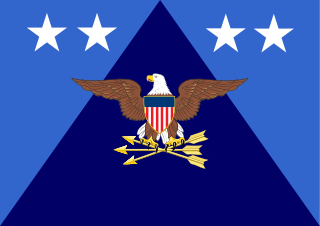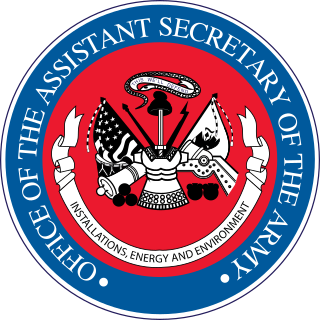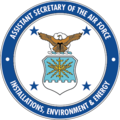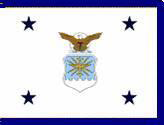The United States order of precedence is an advisory document maintained by the Ceremonials Division of the Office of the Chief of Protocol of the United States which lists the ceremonial order, or relative preeminence, for domestic and foreign government officials at diplomatic, ceremonial, and social events within the United States and abroad. The list is used to mitigate miscommunication and embarrassment in diplomacy, and offer a distinct and concrete spectrum of preeminence for ceremonies. Often the document is used to advise diplomatic and ceremonial event planners on seating charts and order of introduction. Former presidents, vice presidents, first ladies, second ladies, and secretaries of state and retired Supreme Court justices are also included in the list.

The secretary of the Air Force, sometimes referred to as the secretary of the Department of the Air Force, is the head of the Department of the Air Force and the service secretary for the United States Air Force and United States Space Force. The secretary of the Air Force is a civilian appointed by the president, by and with the advice and consent of the Senate. The secretary reports to the secretary of defense and/or the deputy secretary of defense, and is by statute responsible for and has the authority to conduct all the affairs of the Department of the Air Force.

The United States Department of the Army (DA) is one of the three military departments within the Department of Defense of the U.S. The Department of the Army is the federal government agency within which the United States Army (U.S.) is organized, and it is led by the secretary of the Army, who has statutory authority under 10 United States Code § 3013 to conduct its affairs and to prescribe regulations for its government, subject to the limits of the law, and the directions of the secretary of defense and the president.

The United States Department of the Air Force (DAF) is one of the three military departments within the Department of Defense of the United States of America. The Department of the Air Force was formed on September 18, 1947, per the National Security Act of 1947 and it is the military department within which the United States Air Force and the United States Space Force are organized.

The under secretary of defense for personnel and readiness, or USD (P&R) is a high-ranking civilian position in the Office of the Secretary of Defense (OSD) within the United States Department of Defense responsible for advising the secretary and deputy secretary of defense on recruitment, career development, pay and benefits, and oversight of the state of military readiness. The under secretary is appointed from civilian life by the president and confirmed by the Senate to serve at the pleasure of the President.

Susan Morrisey Livingstone is a former Acting U.S. Secretary of the Navy in the George W. Bush administration from January–February 2003. She was the first woman to become Secretary of the Navy in U.S. history. Livingstone played a role in the effort to end coercive and abusive interrogation tactics at U.S. Naval Base Guantanamo Bay, Cuba. At the time, as Under Secretary of the Navy, Livingstone oversaw a large management portfolio, which included lawyers in the Navy General Counsel's office and investigators at the Naval Criminal Investigative Service who raised concerns about the treatment of detainees at Guantanamo Bay Naval Base.
Executive Schedule is the system of salaries given to the highest-ranked appointed officials in the executive branch of the U.S. government. The president of the United States appoints individuals to these positions, most with the advice and consent of the United States Senate. They include members of the president's Cabinet, several top-ranking officials of each executive department, the directors of some of the more prominent departmental and independent agencies, and several members of the Executive Office of the President.
Raymond F. DuBois Jr. is a private consultant in national security and defense policy and also a senior adviser at the Center for Strategic and International Studies, a nonpartisan think-tank in Washington, D.C. At CSIS he focuses on international security policy, civil-military relations, defense management reform, and Joint Professional Military Education. His expertise is in Defense Department organization, management and reform; land forces tactical and non-tactical systems; international and domestic installations and environmental issues; base realignment and closure; National Guard and Reserves issues; stability operations and reconstruction; continuity of business operations and crisis management. He was a member of the Defense Health Board and its NCR BRAC Health Systems Advisory Committee in 2006 to 2009. DuBois was a member of the Bipartisan Policy Center’s Commission on Stabilizing Fragile States. He is a member of the International Advisory Council of the United States Institute of Peace, a member of the Princeton University ROTC Board of Directors. He has spoken at the Maxwell School of Syracuse University, at the European Forum Alpbach 2008 in Austria, at the Marine Corps University, Quantico, Virginia, and before audiences of the National Defense Industry Association and the Association of the United States Army.

The Assistant Secretary of the Navy is a civilian office in the United States Navy established in 1990. The Assistant Secretary of the Navy reports to the Under Secretary of the Navy, who in turn reports to the United States Secretary of the Navy.

The Under Secretary of the Air Force, sometimes referred to as the Under Secretary of the Department of the Air Force, is the second-highest ranking civilian official in the Department of the Air Force of the United States of America, serving directly under the Secretary of the Air Force. In the absence of the Secretary, the Under Secretary exercises all the powers and duties of the Secretary and serves as Acting Secretary when the position of Secretary is vacant. The Under Secretary of the Air Force is appointed by the President, by and with the advice and consent of the Senate.

Bernard Daniel Rostker was Principal Deputy Assistant Secretary of the Navy from 1977 to 1979; Director of the United States Selective Service System from 1979 to 1981; Assistant Secretary of the Navy from 1994 to 1998; Under Secretary of the Army from 1998 to 2000; and Under Secretary of Defense for Personnel and Readiness in 2000-2001. From 1996 to 2001, he also served as Special Assistant to the Deputy Secretary of Defense for Gulf War Illnesses.

Jacqueline Ellen Schafer was the first United States Assistant Secretary of the Navy, holding office from 1990 to 1992.

The Assistant Secretary of the Army for Installations, Energy and Environment is a civilian office within the United States Department of the Army.
The Assistant Secretary of Defense for Energy, Installations, and Environment, formerly known as the Deputy Under Secretary of Defense for Installations and Environment, provided management and oversight of military installations worldwide and manages environmental, safety, and occupational health programs for the Department of Defense (DoD). DoD's installations cover some 29,000,000 acres (120,000 km2), with 539,000 buildings and structures valued at more than $700 billion. The responsibilities of the DUSD (I&E) include the development of installation capabilities, programs, and budgets; installation-energy programs and policy; base realignment and closure; privatization of military housing and utilities; and integration of environmental needs into the weapons acquisition process. The DUSD (I&E) is also responsible for environmental management, safety and occupational health; environmental restoration at active and closing bases; conservation of natural and cultural resources; pollution prevention; environmental research and technology; fire protection; and explosives safety. The DUSD (I&E) reports to the Under Secretary of Defense for Acquisition, Technology and Logistics, and is a part of the Office of the Secretary of Defense.

The Assistant Secretary of the Air Force for Financial Management and Comptroller (SAF/FM) is a civilian official in the United States Department of the Air Force.

Terry Arthur Yonkers is a former United States Assistant Secretary of the Air Force, holding that office from May 7, 2010 to January 20, 2018.

Deputy Assistant Secretary of the Air Force is the title of a civilian office in the United States Department of the Air Force, with its main offices at the Pentagon in Arlington, Virginia. SAF/IEN falls under the Assistant Secretary of the United States Air Force for Installations, Environment, and Energy (SAF/IE), and assists the Assistant Secretary of the Air Force, the Under Secretary of the Air Force, and the Secretary of the Air Force in drafting energy policy, supporting optimization initiatives, and championing projects related to operational energy across the US Air Force. Established in 2010, SAF/IEN focuses on fuel supply and logistics, aerodynamic drag reduction, propulsion efficiency, software development, optimized planning, and fuel data capture.

Assistant Secretary of the Air Force is the title of a civilian office in the United States Department of the Air Force. Along with the four other Assistant Secretaries of the Air Force, the Assistant Secretary of the Air Force assists the United States Secretary of the Air Force and the United States Under Secretary of the Air Force.





















